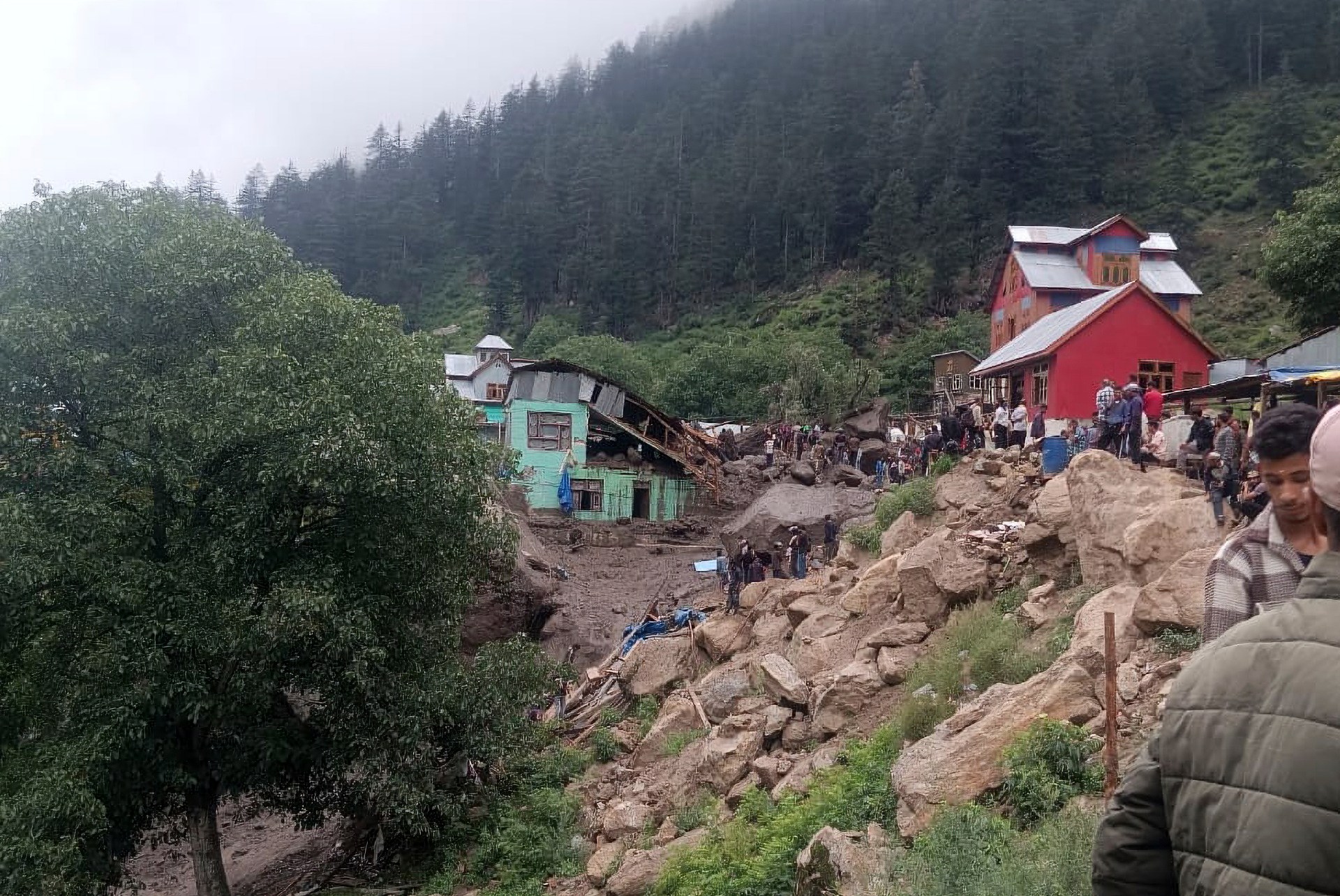Torrential rain struck Chisoti, a town in Kishtwar district in Indian-administered Kashmir, on Thursday morning.
At least 56 people have been killed and dozens more remain missing after a sudden cloudburst unleashed torrential rain in Indian-administered Kashmir, authorities said, marking the second major disaster in the Himalayas in just over a week.
The deluge struck Chisoti, a town in Kishtwar district, on Thursday morning. The site serves as a key stop along the pilgrimage route to the Machail Mata temple, a revered Himalayan shrine dedicated to Goddess Durga.
Television footage showed terrified pilgrims crying as water surged through the settlement.
Omar Abdullah, chief minister of the federal territory of Jammu and Kashmir (Indian-administered Kashmir), described the situation as “grim” and said confirmed details were slow to emerge from the remote location.
Mohammed Irshad said 80 people were reported missing and 300 people were rescued, “50 of whom are severely injured” and were sent to nearby hospitals.
Irshad, a top disaster management official, told the AFP news agency that “56 dead bodies were recovered” from the site before rescue efforts were halted for the night.
Local officials said the death toll from the devastating flood that damaged or washed away many homes was likely to rise.
Sushil Kumar, a resident of the nearby Atholi village, told AFP: “I saw at least 15 dead bodies brought to the local hospital.”
Pankaj Kumar Sharma, district commissioner of Kishtwar, said earlier that “there are chances of more dead bodies being found”.
According to Ramesh Kumar, divisional commissioner of Kishtwar, the cloudburst hit at about 11:30am local time (06:00 GMT). He told ANI news agency that police and disaster response teams were on the ground, while army and air force units had also been mobilised. “Search and rescue operations are under way,” Kumar said.
An official, who asked not to be named as they were not authorised to speak to the media, said the flood swept away a community kitchen and a security post set up to serve pilgrims. “A large number of pilgrims had gathered for lunch and they were washed away,” the official told the news agency Reuters.
The India Meteorological Department defines a cloudburst as a sudden, extreme downpour exceeding 100mm (4 inches) of rain in an hour, often triggering flash floods and landslides in mountainous regions during the monsoon.
Last week, a similar disaster in Uttarakhand, another Himalayan state, buried an entire village under mud and debris after heavy rains.
The Srinagar weather office has warned of further intense rainfall in several parts of Kashmir, including Kishtwar, and urged residents to avoid unstable structures, power lines and old trees due to the risk of additional landslides and flash floods.
“Every possible assistance will be provided to those in need,” Indian Prime Minister Narendra Modi said.
Floods and landslides are common during the monsoon season from June to September, but experts say climate change, coupled with poorly planned development, is increasing their frequency and severity.
The UN’s World Meteorological Organization said last year that increasingly intense floods and droughts are a “distress signal” of what is to come as climate change makes the planet’s water cycle ever more unpredictable.
